Rural Tourism Sheds Light on Ethnic Diversity
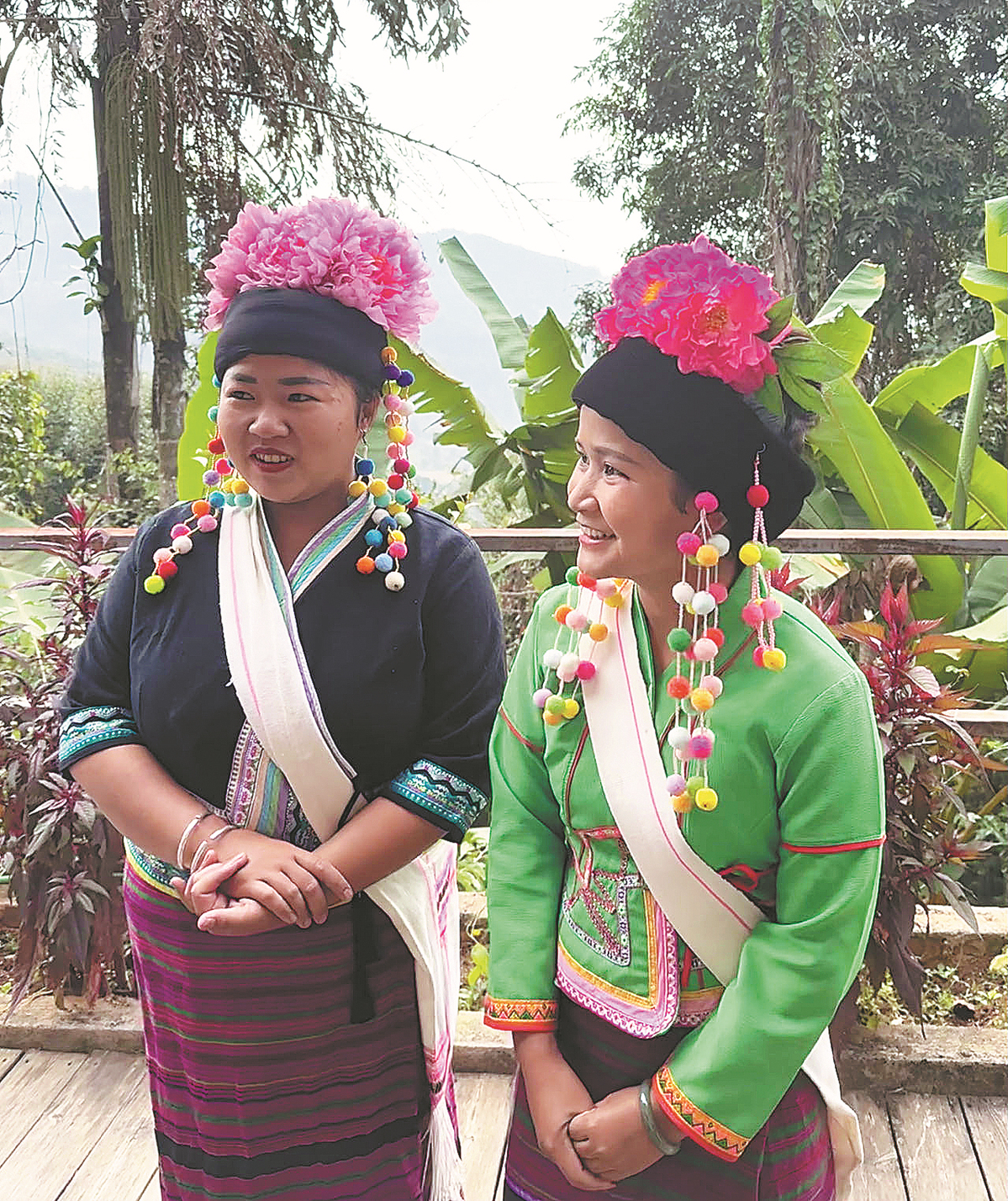 |
| Yu Xuan (right) of the Blang ethnic group introduces ancient tea trees to tourists in Wengji Village of Jingmai Mountain, Yunnan Province, in December. [Cui Jia/China Daily] |
Editor's note: Improved infrastructure, policy support and funding in areas with large populations of varied ethnic groups have transformed people's lives. China Daily presents a series of stories about how China is determined to leave no ethnic group behind in the country's development, while inspiring them to embark on a new journey and make achievements in the new era. This article is the second installment, focusing on ethnic tourism.
Waking up early to see the sun rise above a sea of clouds that floats over a valley of centuries-old tea forests is a must-do for visitors to Jingmai Mountain in Yunnan Province near the China-Myanmar border.
For local Yu Xuan from Wengji Village who is of the Blang ethnic group, as well as their memories of the awe-inspiring views, tourists take away with them a better understanding of the local culture and history, and how people such as the Blang fit into China's patchwork of 56 ethnic groups.
More people have visited since the cultural landscape of Pu'er's old tea forests was made a World Heritage Site in September last year, said the 22-year-old dressed in a traditional Blang brocade dress.
One element that makes the Blang ethnic group intriguing is its reverence for a unique method of growing tea, which has been passed on from generation to generation. The local people cultivate tea trees underneath the forest canopy, which filters the sunlight and ensures moisture.
It is estimated that over a million old tea trees are grown using this method, known as the "under-story" method, over a 72-square-kilometer area of the World Heritage Site, which includes nine traditional villages with inhabitants from five ethnic groups including the Blang and Dai.
Yu said that tea culture has deeply influenced the Blang people and that their most important festival of the year is to honor the ancestors who introduced them to tea tree planting more than 1,800 years ago.
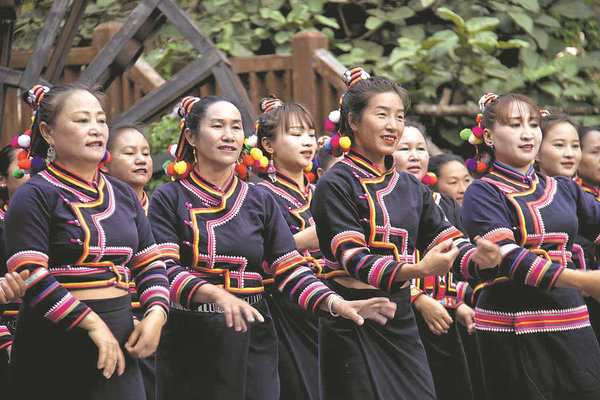 |
| Women of the Lahu ethnic group perform a traditional dance in Laobadao Village, Yunnan, in November. [Cui Jia/China Daily] |
"Many people learn about this and more about the Blang ethnic group for the first time when they visit Wengji Village," said Yu, adding that improved transport infrastructure over the years has made access to the village from the outside much easier.
As a part of efforts to showcase traditional Blang culture, a typical Blang house in the village has been turned into a small museum and has been popular among visitors.
"It's great to see people taking an interest in Blang culture," Yu said. "It's always a great pleasure for me to answer their questions."
The surge in tourism to the area around Jingmai Mountain has brought with it economic returns and an air of optimism, especially among young people. Many locals like Yu, who's just graduated from Yunnan Agricultural University, are choosing to forgo opportunities in cities to return home because of the blossoming tea industry and growing tourism.
"The boom in tourism has brought people from different ethnic groups much closer. Besides learning to respect diversity, people can often realize that we have so much more in common, such as having the same ambitions and goals in life," said Yu, who studied tea tree management at the university. She is now piloting the new methods that she's learned to manage the family's tea tree farm and using new media to promote the family's tea products.
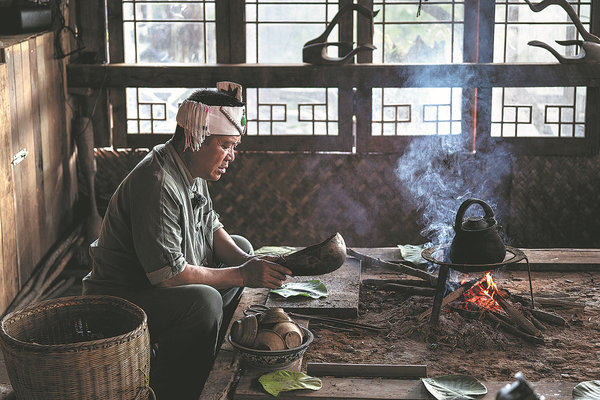 |
| Tea farmer Nan Kang of the Blang ethnic group makes roasted tea at Jingmai Mountain in September. [Hu Chao/Xinhua] |
According to Yu, all the visitors know that the country has put a tremendous amount of effort into improving the lives of people in remote areas, and so seeing just how the villagers' lives have been transformed makes these efforts no longer abstract to them.
Zhang Xiaoqing, a member of a tour group that visited Wengji Village recently, flying in to Jingmai Airport and then renting a car, said: "We didn't expect the condition of the mountainous roads to be this good. The villagers here enjoy all the modern necessities, such as wireless internet and express delivery while waking up every day to such beautiful natural scenery. They're living the dream."
Some of China's lesser-known areas, populated by non-Han ethnic groups, are being discovered for the first time by many tourists as the nation's networks of civil aviation, high-speed rail and highways grow ever-larger, making places once isolated easier to reach.
In Yunnan, which is the home of people from 25 ethnic minority groups, all 16 cities and prefectures now have highways. High-speed train services are available in 13 cities and prefectures. As a result, more and more people have chosen to explore these areas.
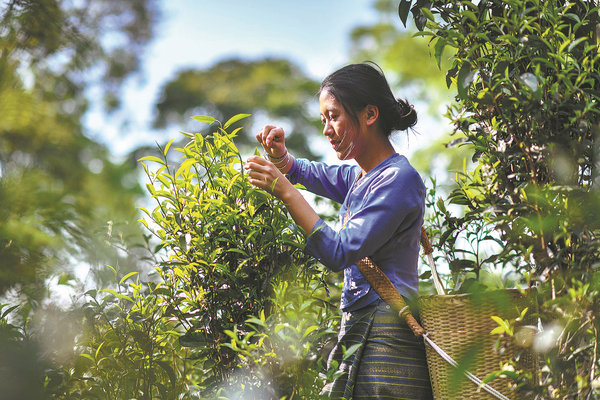 |
| Tea farmer Huang Cuiping picks tea leaves at an ancient tea forest at Jingmai Mountain. [Jiang Menyao/Xinhua] |
The increase in tourism has significantly boosted exchanges and understanding among people of different ethnic groups, said Wu Shixiong, Party chief of the Yunnan Ethnic and Religious Affairs Commission. "People can better understand and appreciate each other. And they can forge a stronger sense of being a part of the community of the Chinese nation."
Since 2016, more than 1,000 villages in the province, like Wengji, have focused on preserving their ethnic culture and developing tourism. Together, they've welcomed more than 1.16 billion tourists, Wu said.
He added that visitors have shown great interest in taking part in traditional ethnic festivals such as the water sprinkling festival of the Dai ethnic group and the torch festival of the Yi, Bai, Lisu, Naxi and Lahu ethnic groups.
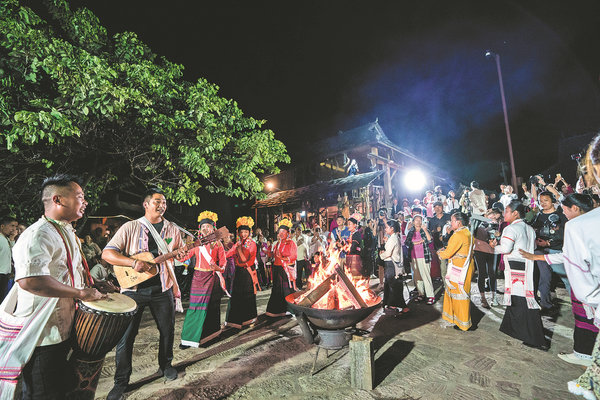 |
| People celebrate around a bonfire in Wengji Village of Pu'er, Yunnan Province, in September, after the cultural landscape of tea forests there was listed as a World Heritage Site. [Hu Chao/Xinhua] |
Personal Exchanges
People may be drawn to areas with strong ethnic characteristics by their stunning natural sceneries at first, but the exchanges with the local people may be more memorable for the tourists in the end, said Liu Hong, director of the culture, radio, television and tourism administration of Garze Tibetan Autonomous Prefecture, Sichuan province.
Liu has been posting short videos on social media to promote the snow-capped mountains and lush valleys in Garze, located on the edge of the Qinghai-Xizang Plateau, since 2021. In his videos, he's often dressed up as a swordsman from ancient China and seen wandering around the picturesque prefecture. He has more than 2.51 million followers on the short-video platform Douyin, known as TikTok outside of China.
Besides sightseeing, people can also learn about how people from the Han, Tibetan, Qiang and Yi ethnic groups historically were brought together in Garze via ancient trade routes, and they can see the importance of exchanges during the process, Liu said.
"During their visits, tourists can naturally have a better understanding of the local cultures and people, so just like the ancient trade routes, tourism can boost exchanges among people from different ethnic groups in China," Liu said.
When Lu Jiayong, a university student from Shanghai, recalls visiting Garze in August last year, the very first thing that pops up in his mind is having butter tea with a Tibetan family in their yurt, which wasn't something originally on his itinerary.
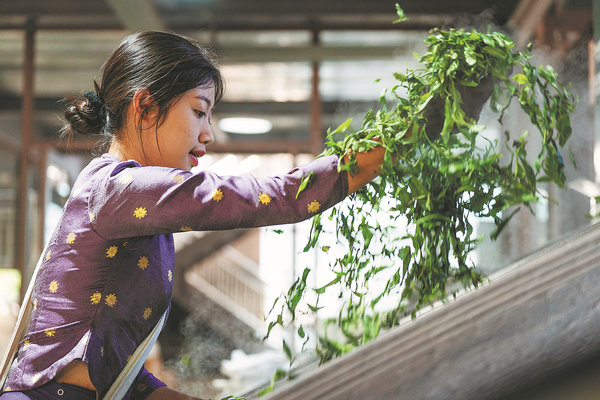 |
| Ye Xiang, a member of the Dai ethnic group, processes raw tea leaves in a factory in Jingmai Mountain, Yunnan Province, in September. [Hu Chao/Xinhua] |
As the 20-year-old and two of his friends were taking pictures on the grassland one afternoon, he noticed a young Tibetan herdsman on horseback moving toward them.
"He stopped in front of us and pointed to a yurt not far away. He then said his mother had seen us on the family's pasture and insisted on inviting us for tea," Lu said. "We were so shocked and touched at the same time because you will never get an invitation like that in the big city, so we decided to follow the young man to the yurt.
"His mother was so happy to see us and made us butter tea (an ethnic Tibetan specialty). They also taught us how to eat tsampa, a traditional Tibetan staple food of roasted barley. We wanted to pay for the tea and food, but the mother strongly objected and said we were her guests," Lu said.
"We got to learn about the Tibetan culture from them and had such a good time," he said. "We all agree that spending time with the mother and son in the yurt was the best part of our trip in Garze, and that's what traveling is all about."
(Source: China Daily)
Please understand that womenofchina.cn,a non-profit, information-communication website, cannot reach every writer before using articles and images. For copyright issues, please contact us by emailing: website@womenofchina.cn. The articles published and opinions expressed on this website represent the opinions of writers and are not necessarily shared by womenofchina.cn.





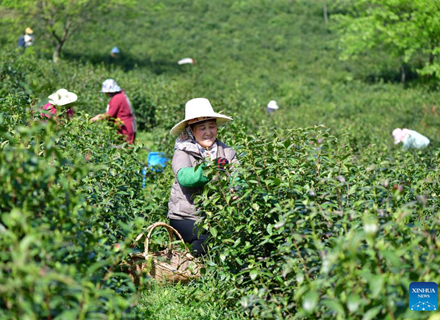


 WeChat
WeChat Weibo
Weibo 京公网安备 11010102004314号
京公网安备 11010102004314号